Presentation on the topic: Earth is our home
1 of 15
Presentation on the topic: The earth is our home
Slide no. 1
Slide description:
Slide no. 2
Slide description:
Slide no. 3
Slide description:
Life on Earth is a unique phenomenon, and nature on it is a great and wise educator. Unfortunately, many are still indifferent to the beauty and harmony of nature. Probably because they don’t imagine how poor life would be without the abundance of animals and plants, how necessary they are, finally, necessary for us. We are all children of nature. Life on Earth is a unique phenomenon, and nature on it is a great and wise educator. Unfortunately, many are still indifferent to the beauty and harmony of nature. Probably because they don’t imagine how poor life would be without the abundance of animals and plants, how necessary they are, finally, necessary for us. We are all children of nature.
Slide no. 4
Slide description:
Man takes water from rivers, lakes, springs, he has learned to get food himself, but air is supplied to all living things only by plants (grasses and trees). And don’t forget about the benefits of plant photosynthesis, not to mention the healing benefits of herbs. Man takes water from rivers, lakes, springs, he has learned to get food himself, but air is supplied to all living things only by plants (grasses and trees). And don’t forget about the benefits of plant photosynthesis, not to mention the healing benefits of herbs.
Slide no. 5
Slide description:
It is difficult to imagine in monetary terms the life-giving ability of the forest. Humanity is accustomed to using the gifts of nature without thinking. But they have a price, and a considerable one. The benefits of forests are often valued many times higher than the cost of wood. In Japan, the Ashiyami forest was valued 6 times more expensive than the cost its wood.
Slide no. 6
Slide description:
Slide no. 7
Slide description:
Slide no. 8
Slide description:
From time immemorial, man turned to the forest: it fed him, warmed him, protected him, taught him to be observant, and influenced his mental well-being. A person who understands nature is nobler and purer. There are moments in every person’s life when communication with nature awakens patriotic feelings in him and evokes noble aspirations. A person is especially acutely aware of this when leaving his native places - they become family and friends to him in a new way.
Municipal autonomous preschool educational institution
Novouralsk urban district - kindergarten combined type"Wonderland"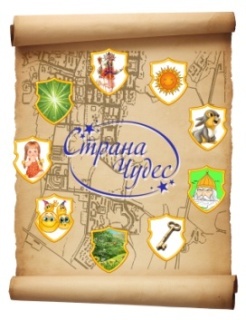
Kindergarten No. 13 “Golden Key”
ENVIRONMENTAL PROJECT
Subject: “The earth is our common home”
Educators:
Shpakova Svetlana Igorevna
Novouralsk 2016
Relevance of the project
We must take care of the planet.
Fields, forests, seas and oceans,
Continents, islands and countries.
To the planet lived,
For the planet to bloom
Take care of this world man.
It was created for you to live!
Nature is an amazing phenomenon, educational impact which on spiritual world It is difficult to overestimate a preschool child. Nature is the source of the first concrete knowledge and joyful experiences, often remembered for a lifetime. A child's soul is revealed in communication with nature, interest in the world around him is awakened, and the ability to make discoveries and be surprised by them is formed. It's no secret that preschool children are explorers by nature. An unquenchable thirst for new experiences, curiosity, constant desire experimenting and independently seeking new information about the world are traditionally considered to be the most important features of children’s behavior. Research, search activity – natural state child, he is determined to understand the world, he wants to know it. To explore, discover, study means to take a step into the unknown and unknown. Exactly exploratory behavior and creates conditions for mental development the child initially unfolded as a process of self-development.
Special meaning For the development of a preschooler’s personality, it is necessary for him to assimilate ideas about the relationship between nature and man. Mastering the ways
practical interaction with the environment ensures the formation of the child’s worldview, his personal growth. A significant role in this direction is played by the search and cognitive activity of preschool children, which takes place in the form of experimental actions. In their process, children transform objects in order to reveal their hidden significant connections with natural phenomena.
The initial link continuous system environmental education rightfully needs to be considered preschool environmental education. After all, preschool childhood is the basic, initial stage of personality formation. Preschool age- this is the period when the child takes his first steps “along the path of understanding the natural world.” Therefore in our kindergarten is given great attention formation ecological culture children. To do this, we use more and more new forms and methods of working with children. We adopted design method and began to actively implement it.
Using the project method in the activities of our preschool educational institution with the help of environmental education, we have more chances form a generation with new culture behavior. However, for this it is not enough to simply encourage children not to litter, not to pick flowers in flower beds, not to make fires, etc. Behavior even little man must be conscious and motivated.
To solve this problem, it was conceived and implemented in our kindergarten environmental project"The earth is our common home."
The formation of an environmental culture should begin in kindergarten. Since the ecological self-awareness of children is not sufficiently formed, based on this, it is possible to formulate the goal of the project and its objectives.
Objective of the project:
formation of ecological culture of older preschoolers.
Tasks:
Ensuring the development of children's interests, curiosity and cognitive motivation;
Creation favorable conditions for the formation of cognitive actions, the formation of consciousness;
Development of imagination and creative activity;
Expanding children's ideas about nature, developing interest in understanding nature, enriching moral experience, nurturing love for surrounding nature;
Organization of practical environmental activities children and parents.
Project participants : children of the preparatory school group “Solnyshko”, parents, teachers: Shpakova Svetlana Igorevna, Tochilina Tatyana Viktorovna
Project duration: 8 months (September 2014 – April 2015).
Predicted result .
Increasing the level of knowledge on ecology in children.
Creation of an environmentally friendly environment on the territory of kindergarten No. 13 “Golden Key”.
Development of observation skills in children.
Usage creative ideas when designing landscape design on the site of the “Solnyshko” group.
Improving the level of knowledge and environmental competence of parents on the topic of the project.
Project implementation stages:
1. Organizational:
1. Planning upcoming activities aimed at implementing
project.
2. Observations and ecological excursions around the territory of the kindergarten and into the forest park area.
2. Educational reading.
3. Providing a didactic kit for the implementation of the project.
4. Creation of the album “The Red Book of the Urals”.
5. Productive activity.
6. Release of an environmental newspaper.
8. Ecological holidays and entertainment.
9. Familiarity with environmental signs and installation of them.
10. Clean-up days with parents.
11. Final event.
II . Active:
- work on thematic planning;
Conducting group events;
Interaction with parents aimed at getting to know each other project activities;
Observations and ecological excursions;
Environmental actions;
Mobile, didactic, simulation games, environmental performances.
III . Final:
- holding cleanup days together with the parents of children;
Participation in city and regional competitive events;
Exhibition productive activity children;
Photo vernissages;
Project presentations;
Resource support project:
1. Area of observation and experimentation in the group.
2. Methodological tools (card index didactic games, notes
GCD, entertainment scenarios, etc.).
3. Library of a young ecologist.
4. Selection fiction"Cognitive reading."
5. A selection of experiences and experiments “Experiments”.
Thematic planning on project implementation
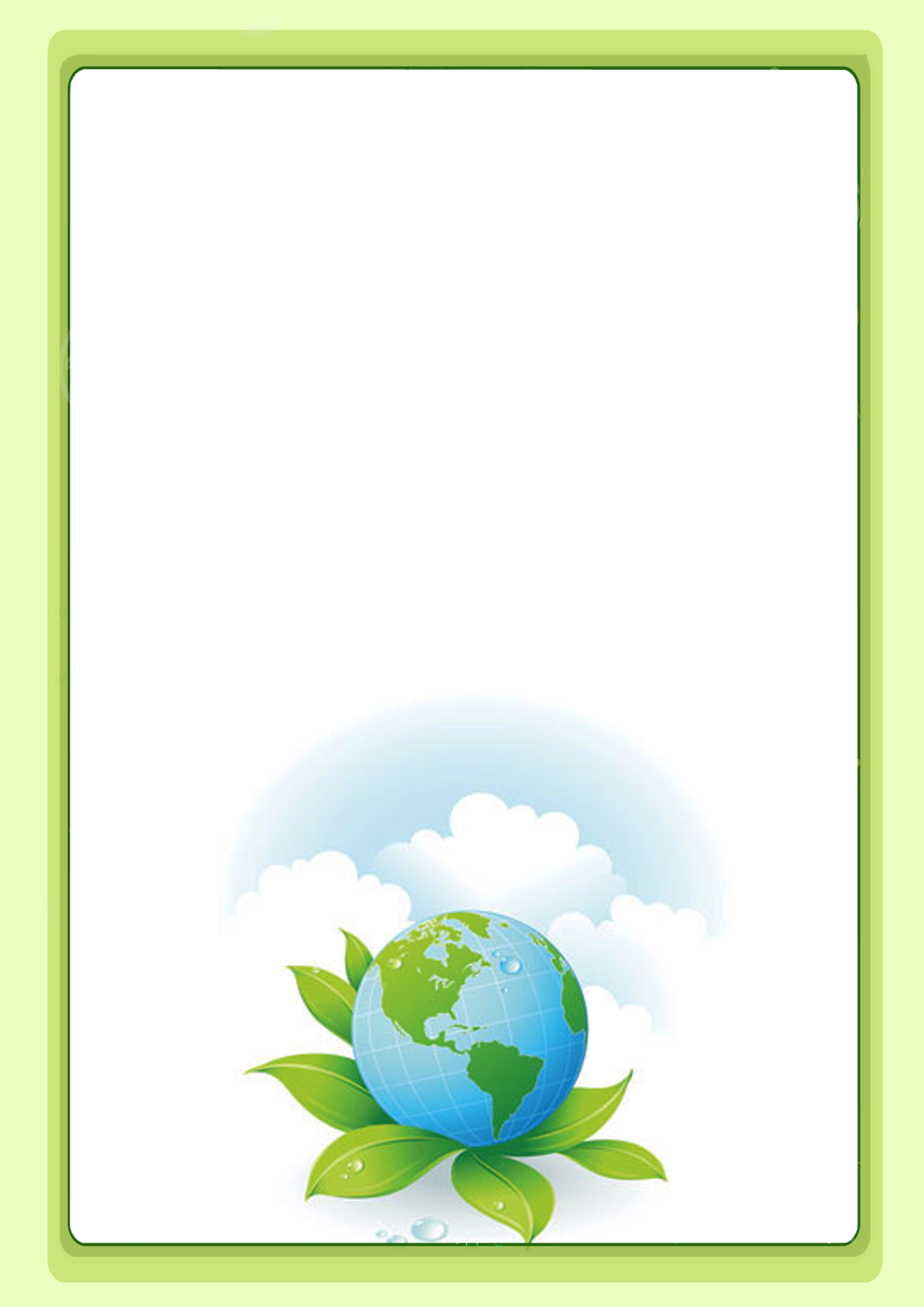
Cooperative activity teacher with children
Interaction with family
September October
Solution problem situations, what needs to be done to reduce waste on the site.
Joint work activity Location on
Offer parents several problem situations and discuss their solution.
Viewing and discussion of the presentation “Inhabitants of Planet Earth”
Getting to know the types of seeds and collecting them.
To interest parents in participating in the “Ecological Signs” competition
To interest parents in creating a collection “Herbarium”, “Seeds”
Leaves applique
Parents' participation in collecting cones and acorns, leaves and drying them.
Drawing a site layout plan to improve the landscape.
Getting to know folk wisdom O careful attitude to nature.
Labor landing (subbotnik).
Planting bushes on the group's plot.
November
View presentation: “Birds of our region”
Drawing: “Bullfinch”
Feeder competition.
Collaborative collage: “Birds of our region”

Making reminders - leaflets: “Feed the birds in winter” and presenting them to other groups
Ecological fun
Campaign: “Let’s feed the birds in winter”
Contest: " Ecological trail my family". Stop “bird house” - photo report
Learning poems about birds
Children's drawings “Let's help our land”
Writing poems “Save our Earth”
December - January
View the presentation “Trees of our forests”
Release of leaflets “Buy an artificial Christmas tree, save the forest!”
Ecological games
“Dreamer”, “Which tree is the leaf from”, “Guess and don’t be mistaken”
Making spruce from plasticine
To interest parents in participating in the competition:
“Christmas tree toy made from waste material”
Decorating a spruce tree with toys made from waste material
A series of observations of spruce.
Video presentation “Our beautiful Christmas tree”
Making an invitation poster for New Year, in an unconventional way drawing (with palms) Christmas trees
Involve parents in a poster competition
"Take care of the spruce"
February March
View documentaries about water.
Compiling a catalog of games about water.
Involve parents in creating an exhibition of books about water
Tab for books
"March of the Parks"
Planting onions and flower seedlings on the window.
To interest parents in the environmental bookmarking competition “March of Parks”
Involve parents in landscaping the kindergarten area
"Amazing Stones"
Educational games with a drop of water.
Making sliding folders “Experiments and observations”
Involve parents in creating a collection of stones
Protection of posters “Water is life”
Solving crossword puzzles about states of water.
Release of leaflets “Save water”
Compilation of crossword puzzles by children and parents
April
Getting to know the primroses on the site.
Getting to know insects.
Campaign: “Feed the birds!”
Familiarization with the anthill on the site.
Making a sign: “Beware of the anthill!”
Participation of parents in a joint cleanup day
Making an environmental stand: “This is how we helped the nature around us”
Planting flowers in the flowerbeds of the group plot
Preparing for the Earth's Birthday holiday
Parents' participation in the Earth's Birthday celebration
Final lesson: watching a video, conversation
Participation in the final lesson.
Analysis of work on the project “The Earth is our common home”
In the process of working on the project “The Earth is our common home,” children not only showed a willingness to participate in projects proposed by adults, but also suggested problems and possible ways their decisions. The results showed that children learned environmental skills and respect for environment, the natural world. They have an idea of human environmental activities, love nature, want to study it, admire it, and take care of it. The children talked about the rules of behavior using examples, how they relax with their parents in nature, and the dacha, and how they influence the environmental education of their parents.
The children learned that the world of things around us is very diverse. There are items that serve us for a long time, and there are those that become unnecessary. They are called waste material. But it turns out that unnecessary things can acquire a second life if you try to see something unusual in them. You just need to fantasize, use your imagination. It was possible to organize work with waste materials so that children not only learned design skills, but also revealed their potential creative possibilities, experienced a sense of satisfaction from a job well done.
Parents were actively involved in working on the project, talked with their children at home, discussed different variants helping our planet. Together with the children, we made crafts at home from waste material, brought films and photographs about disasters and catastrophes that happen on our planet.
The main focus of this project was the moral and environmental education of children. Their awareness of their belonging to our planet, their acceptance of the planet as a common home that must be taken care of and looked after. And that every person can make a feasible contribution to the common cause of all people on Earth. And I wanted to read lines from a poem written by the parents of our group:
There are many wonders on planet Earth.
There is a unique beauty in it.
It's important to always be human
And the Earth will be grateful to him!
Applications
Drawings by our students
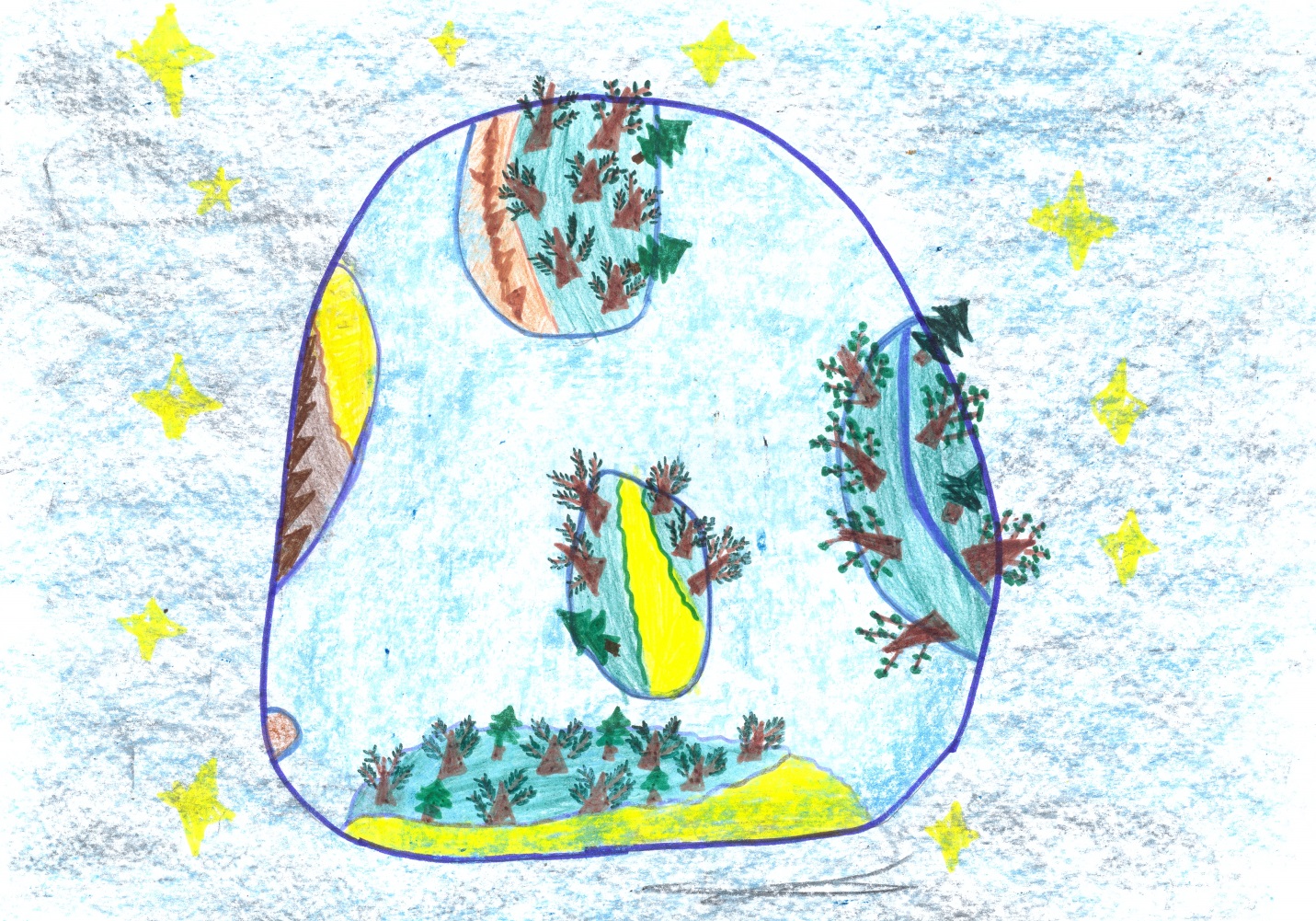
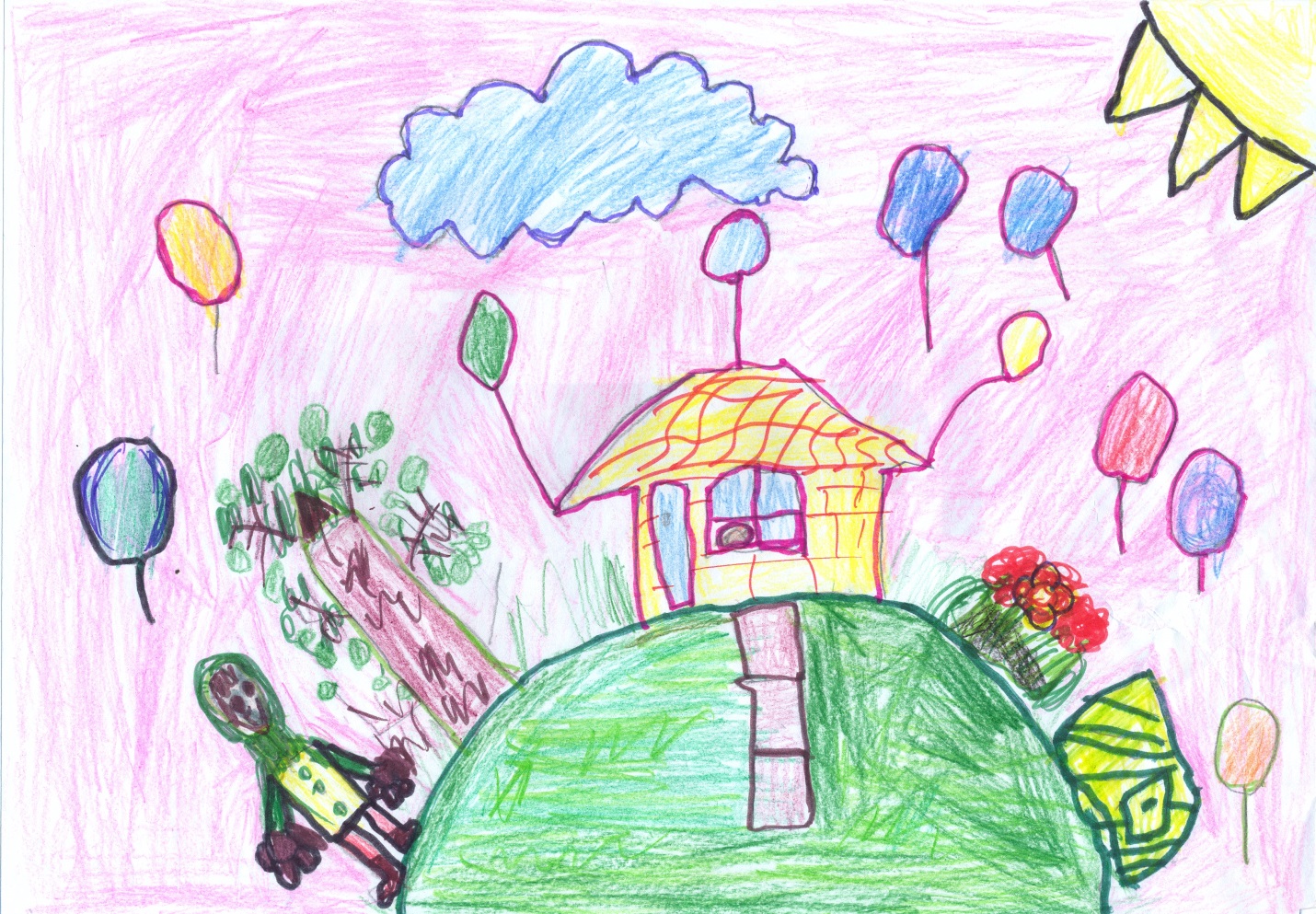
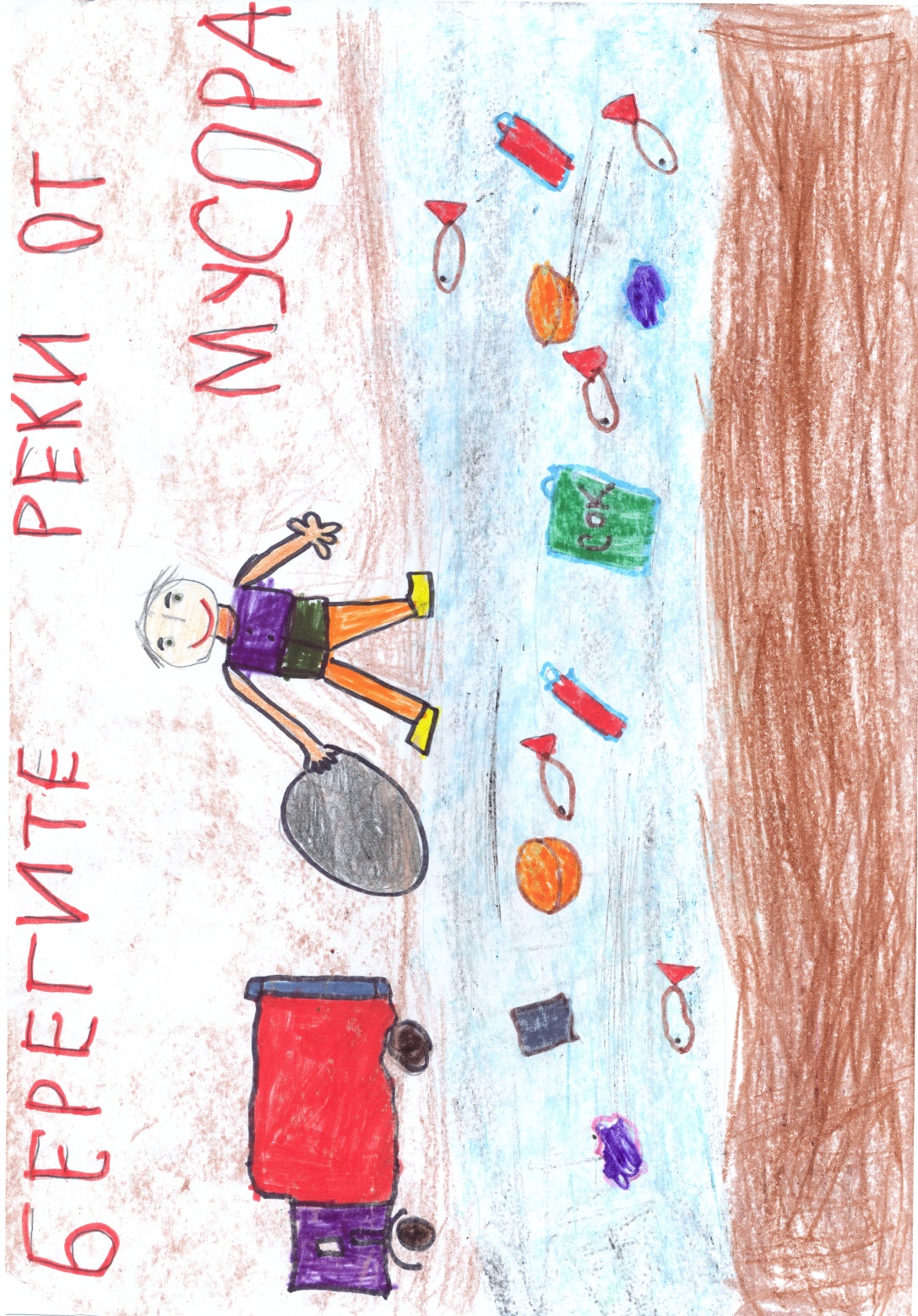
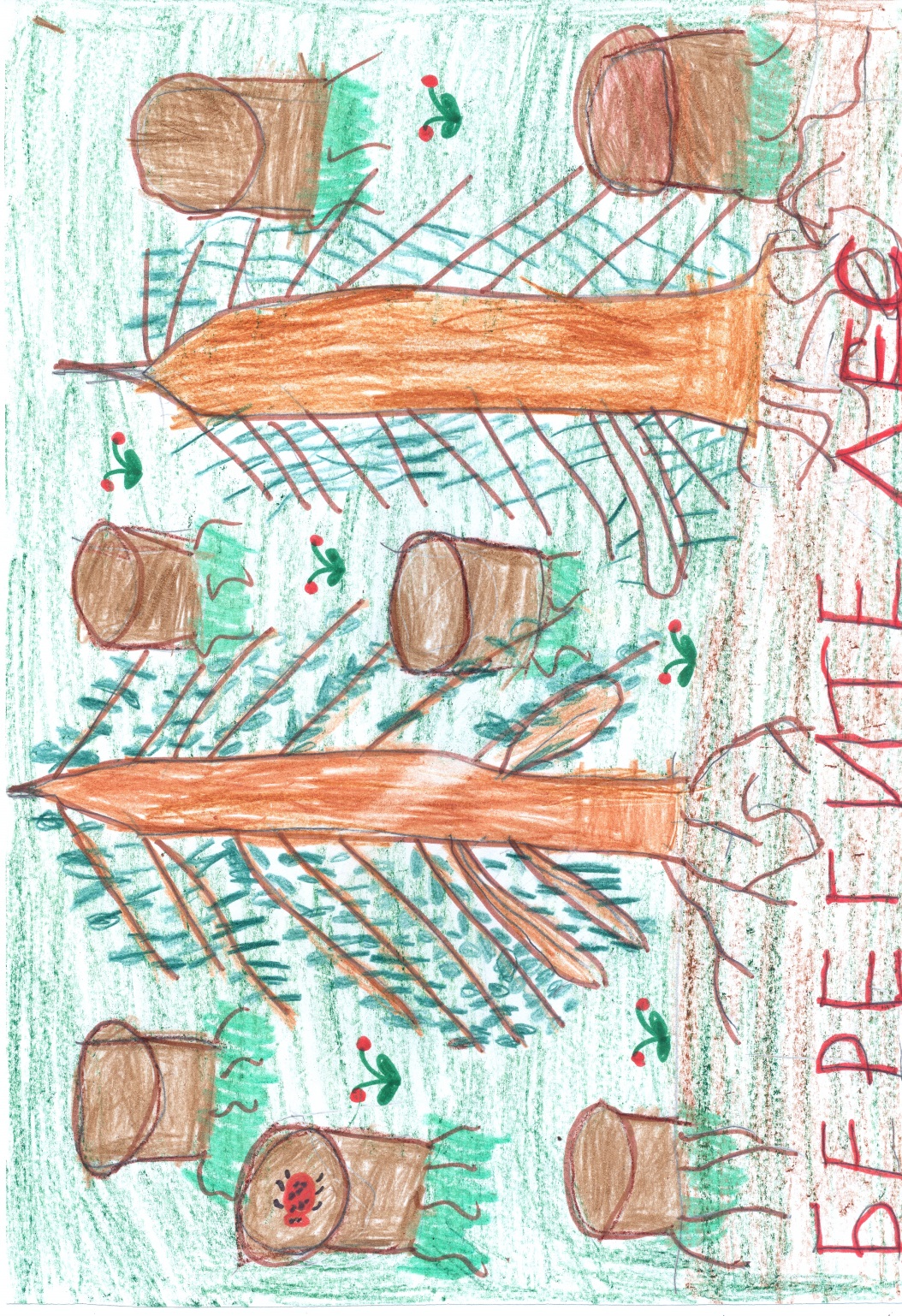
Labor landing
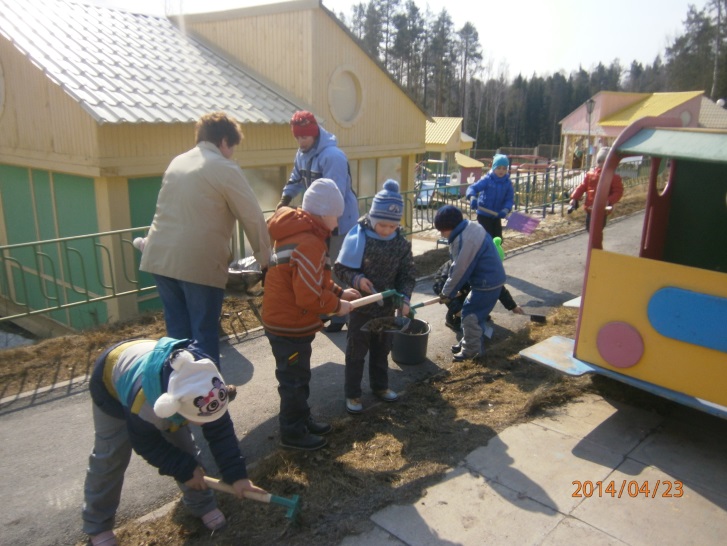
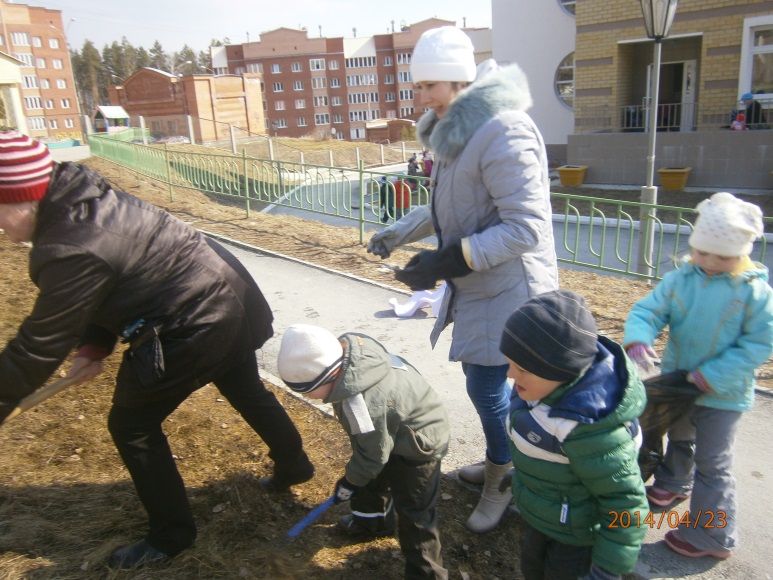
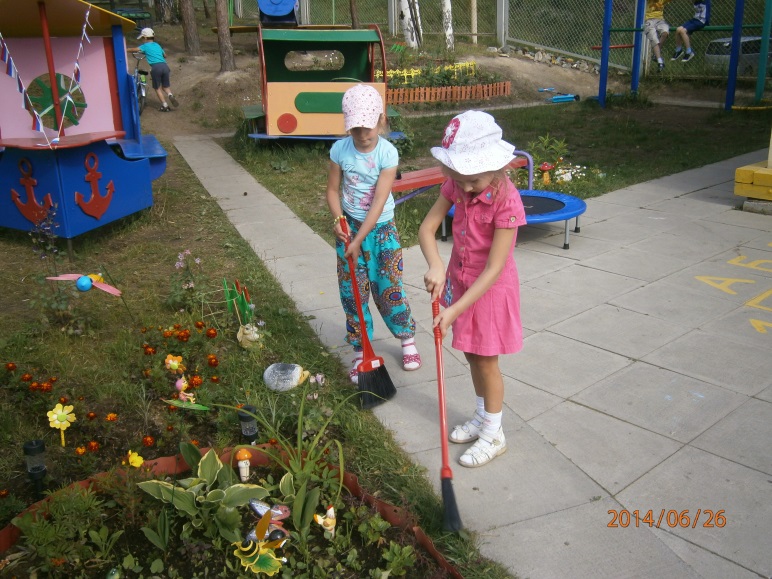
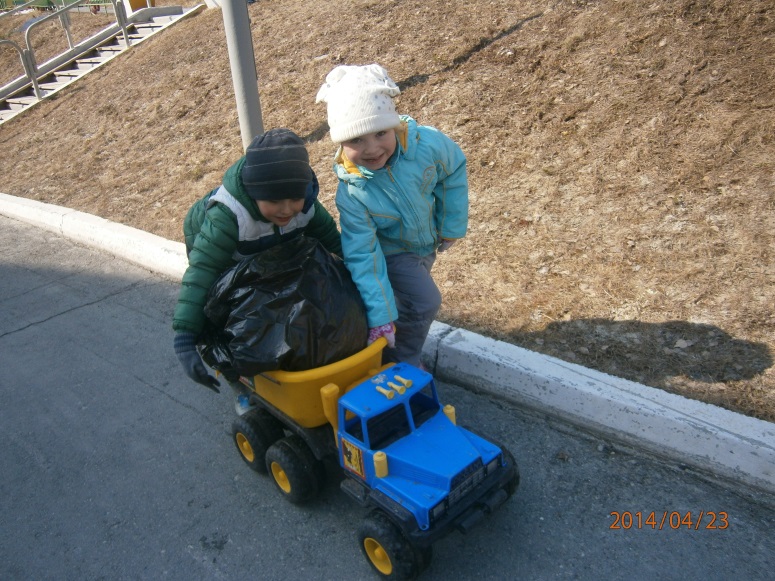
Crafts from waste material
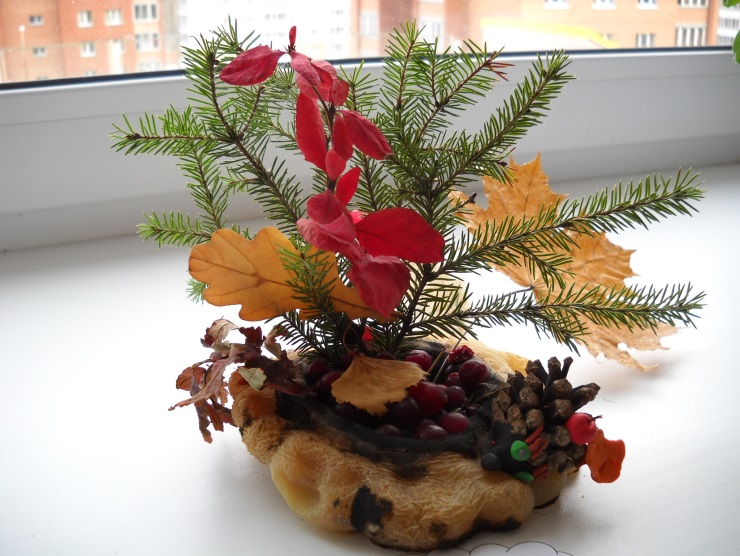
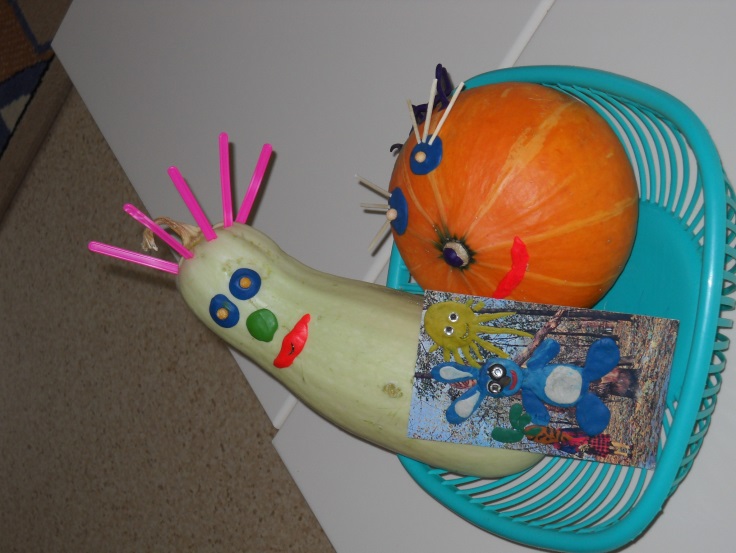
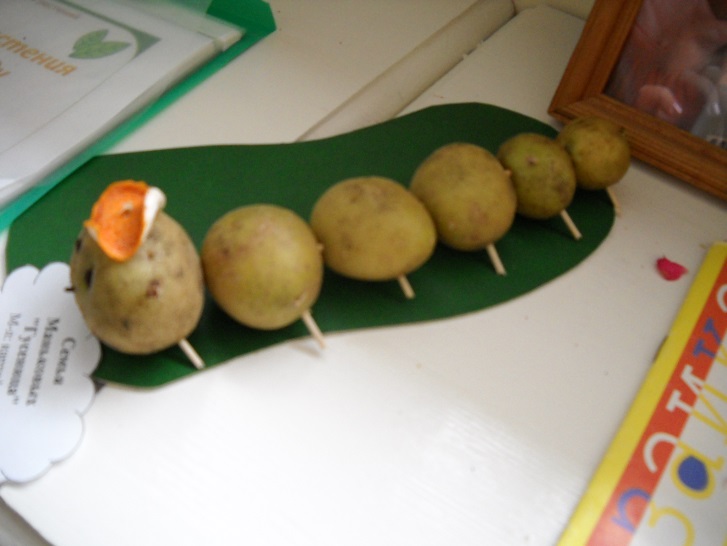
Growing seedlings on a group plot
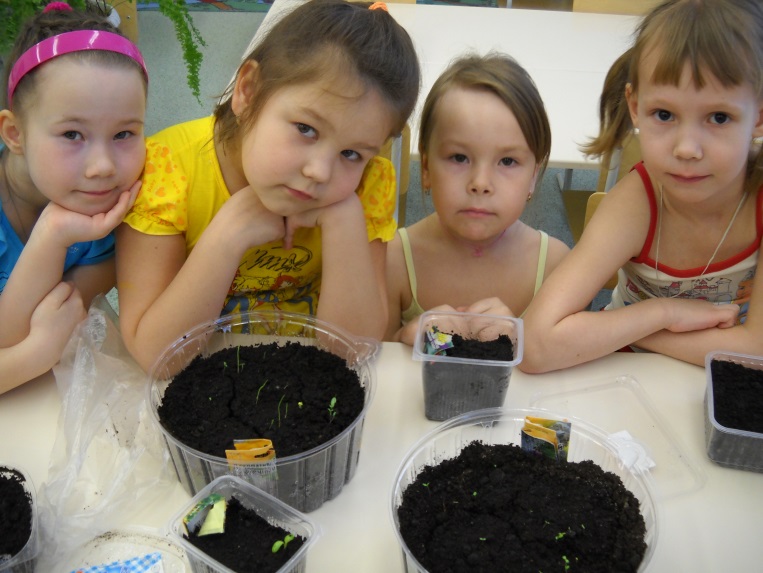
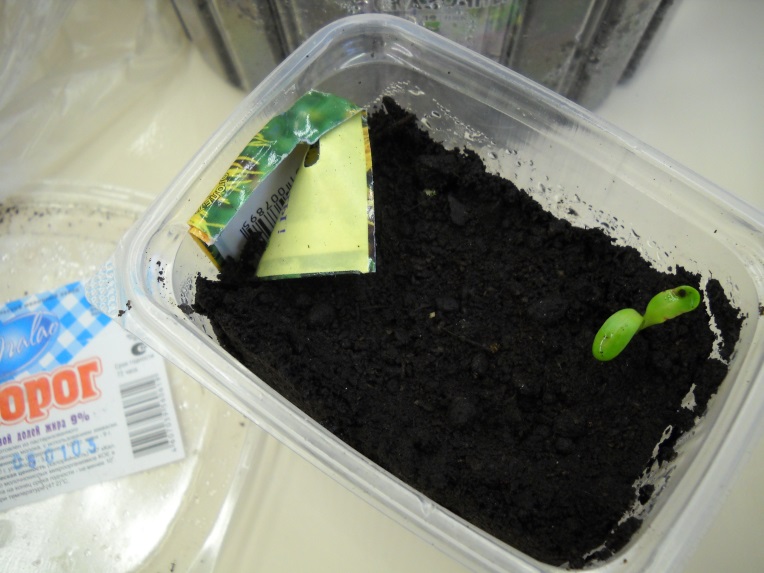
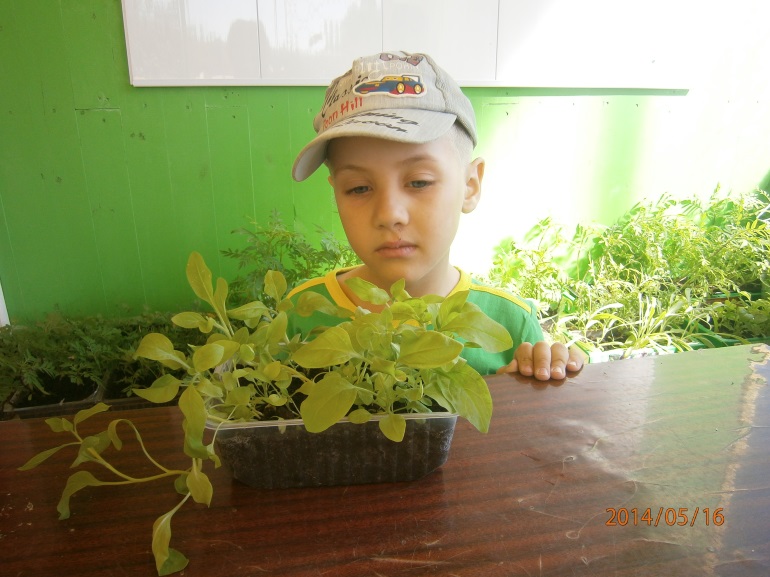
Children's stories about our planet
Our land is very beautiful, sunny, sometimes warm. Sometimes it rains, it waters the gardens. There are many mountains on Earth where you can go snowmobiling. There are seas, oceans, and a salt lake on Earth. There are many countries on Earth where people live, they speak different languages. All sorts of animals and birds live in the forests, and marine animals live in the seas. Beautiful nature on our planet. We need to protect nature and not litter.Darina
Our Earth is round. Consists of pieces of sushi. Seas, oceans, rivers and lakes. Various marine inhabitants live in the ocean: fish, octopuses, dolphins, whales, sharks, and marine plants. They live on Earth different people, they speak Italian, African, Chinese, English, Russian. There are many forests, mountains, and deserts on our Earth. Various animals, birds, insects live with us.
We need to respect the Earth, protect its beauty and kindness.
Daniel
Our earth is like a ball and very large. And it revolves around the Sun. She is the only one you can live on. And all other planets are not suitable for life. There are seas and oceans on Earth. There is water that we use to wash our clothes and wash our hands. There are animals on Earth. We must protect the water, the earth, the grass, the trees so that nothing dies. We won't be able to live without it.
Lenya
We live on planet earth. I live in Russia, in the city of Novouralsk. Our planet is the most beautiful, there are deserts, water, forests, mountains. Trees grow in the forests: birch, rowan, oak, spruce, pine. There are animals: wolves, foxes, squirrels, bears, hares. There are many on our planet beautiful birds. Our planet is called blue because there is a lot of water on our planet: rivers, lakes, swamps, seas and oceans. Our planet must not be polluted. You need to pick up trash after yourself when you walk in the forest and don’t throw away candy wrappers and chocolates.
Olesya
I live on planet earth. There are mountains on our planet. She looks like a ball. There are seas, oceans, rivers, lakes on Earth. There are many countries where people live and speak different languages. All sorts of animals and birds live in the forests. Marine animals live in the seas. There are stones in the Earth, they are mined and various decorations are made. Beautiful nature on Earth, it must be protected. We protect our Earth from garbage so that the planet is clean.
Timofey
Our Earth is round. There are many houses and people on it. There are many birds and animals on Earth. There is a lot of water on our planet. Eat fresh water to drink, cook food. People need water so as not to die. All sorts of medicines are made from water. The nature of the Earth is very beautiful: many flowers, trees, different animals. There are mountains and forests on our planet. We need to take care of the Earth, it provides people with food, healthy vitamins, and water.
Danil
Our Earth is very interesting. She has a lot of interesting and useful things. People and animals live on it. And fish live in the water. There are many animals and birds on earth. And insects also live on it. We must take care of our Earth because it is beautiful.
Polina N.
Our Earth is beautiful, like a ball. Our Earth is good, it must be protected from garbage and taken care of. It has seas and oceans, rivers and lakes. Aquatic inhabitants live in them. Different people live on land. On land there are fields, forests, mountains, deserts. Eat North Pole, it’s cold there, but northern bears and seals also live there.
Mstislav
On our planet there are jungles, mountains, seas, animals, sea animals. We have air on Earth that allows people to live. On our Earth there is a North Pole where polar bears live. There are forests where trees and grass grow. You need to love and respect nature so that nature does not die: plant flowers, vegetables, berries.
Misha
We live on planet earth. Our Earth is beautiful. We love our planet. People fish on lakes. There are different countries on our planet where different people live. There are oceans and seas where marine animals live. Wild animals, birds and insects live in forests. We must take care of our Earth.
Kirill
Our planet has mountains and seas. Water can be salty or fresh. There are sea animals in the seas. Various wild animals, birds, and insects live in the forests. Everyone needs fresh air: for people, animals, and plants. We need to protect our Earth from garbage, I don’t throw candy wrappers on the streets.
Egor
I live on planet earth. There are many different countries on it. My country is Russia. I live in the city of Novouralsk, Lenin Street. There is a lot of water on our planet: streams, lakes, seas, oceans. I like flowers on our planet. They grow in gardens, fields, kindergartens, and at my home. Various animals live on our planet. They live in the forest. These are bears, squirrels, wild boars. Birds build their nests. Fish, turtles, hippos, seahorses, and jellyfish live in the water. Everyone needs water and clean air. All people need to protect nature. Do not break trees, do not throw candy wrappers, do not break glass, because you can injure animals.
Ilya V.
We live on planet earth. Our planet is very beautiful. There are many treasures, minerals, and precious stones underground. There are many rivers, lakes, seas and oceans on Earth. There are many different fish, octopuses, and underwater horses in the oceans. Also on our planet there are many forests and mountains, where various animals and birds live. People built houses and ships. Our planet must be protected: do not break trees, do not litter, take care of animals.
Ilya A.
We live on planet earth. Our city is called Novouralsk. I live on the Lenin Street. There are many on our Earth beautiful flowers, trees, bushes, grass, berries, mushrooms. We have many forests, mountains, oceans, rivers, lakes. There are animals in the forest: bear, fox, wild boar, wolf, hedgehog, hares. Fish, jellyfish, and sharks live in the seas. We have very beautiful planet. We must respect our planet and protect and preserve it. You need to pick up trash after yourself. Make bird feeders and put food in them. Birds cannot be caught, because they will die in captivity and there will be no birds on Earth, and forests and gardens will die.
Polina P.
The earth gives us benefits, goodness, and does not offend us. You can’t throw garbage, bottles, you can’t offend her.
Earth is our planet. There are a lot of clouds, seas, people, sand, stones on it. In the forests there are a lot of mushrooms, clearings with flowers and grass, and insects, a lot of animals, trees. People have built many houses and cars.
Lenya
I live on planet earth. My country is called Russia. The city where I live is called Novouralsk. We have a lot of forests. Wild animals live there: fox, hare, wolf, bear, squirrel. There are different birds: sparrows, tits, bullfinches, swallows. Birds feed on insects: mosquitoes, worms, beetles. On our planet there are lakes, rivers, seas, oceans, mountains. Our planet must be protected; it provides warmth, clean air, and water. We don’t have to throw garbage into the river, candy wrappers or pieces of paper onto the path.
Arseny
Our planet was called Earth. It must be protected from garbage: do not throw garbage into the water, do not throw paper on the path, do not leave garbage in the forest. There are many different cities on our planet, many peoples, they speak different languages. There are many animals, birds, and insects in the forests. There are also many beautiful trees. There are birch groves and pine forests. There is a lot of water on our planet: rivers, lakes, oceans, seas. Marine, river and aquatic life lives there. We have many animals in the forest: squirrels, woodpeckers, insects. Lots of plants: flowers, mushrooms. I love my Earth and will take care of it.
Arina
There are many people living on Earth. There are forests, lakes, rivers, seas, oceans, mountains and different countries. IN different countries people speak different languages. There are volcanoes. In order for the planet to be clean, we must maintain cleanliness: do not throw cans, candy wrappers, do not pour oil into the sea, the fish will die.
Sofia
The Earth is our planet, we live on it. We need to take care of our planet. If we look after her, she will also treat us well. We will love our Earth: protect forests, do not throw garbage, save water, otherwise the fish will die.
Tamara
I live on planet earth. There are many people living on our planet. They speak different languages because they live in different countries. I live in the country of Russia, in the city of Novouralsk, on Lenin Street. There is a lot of water on our planet: streams, lakes, rivers, seas, oceans. Crocodiles, fish, walruses, seahorses live there, seals. There are wild animals in the forests: wolves, squirrels, bears, foxes, hares. There are birds and insects. They live in burrows, nests, trees, and grass. There are a lot of mushrooms, berries, and trees in our forests. Nature gives us air and strength, water. We cannot live without our nature, so we must protect it.
Angelica
Summary of the joint activity “Earth is our common home”
Goal: to promote the formation of children’s ideas that planet Earth is a huge ball. Most of globe covered with water - oceans and seas, besides water there are continents - solid ground, (land where people live). Generalization of knowledge that there are many living creatures on planet Earth, what they all need pure water, fresh air, pure land; the formation of ideas that planet Earth is now in danger; to cultivate a love for nature, proper communication with it, a desire to study it.
Materials: globe, illustrations, ball, drawing paper, sets of colored pencils.
Preliminary work: Examination of the globe, map.
Reading educational literature (from the series “ Ecological disasters"). Looking at illustrations and talking with children.
Progress of joint activities:
Working with the globe. A globe is added to the group. The teacher invites the children to look at the globe.
Educator. Which amazing planet- Earth! Seas and oceans splash on its surface, rivers and streams flow, wide plains spread out, green forests rustle, rise high mountains. The earth is a huge ball. It rotates around its axis and at the same time around the Sun, the closest star to us. Examination of the globe, answers to the questions: – What shape does the Earth have? – What living creatures inhabit the Earth? – What do all living beings on Earth need? (Heat, light from the Sun, air and water.) - What does a person need on Earth? (Fresh air, clean water, fertile soil, plants and animals.) - Why is the Earth called a common home? – Who pollutes our planet and how? (There are a lot of sick places on our planet). This happened because people built many plants, factories, electrical and nuclear power plants. These enterprises pollute the air - it is polluted by smoke that goes into the sky from pipes, gases from cars. Waste from factories is discharged into rivers and seas. Many plants and animals die from this, and people get sick. Nature is dying. Our planet needs help). – What can a person do to preserve the riches of the Earth? (To help her, you need to learn to love nature, to love it from childhood. Learn to understand how all living beings live: birds, bugs, animals. This is what people called ecologists do.)
2. Physical exercise. Game “Catch the ball - say the word.” Children stand in a circle. To whom the teacher throws the ball, he must name one of the riches of the Earth.
3. Game “How can we help our planet?” Assignment: come up with environmental signs and draw them. Viewing and discussion of drawings, summing up.
Summary of joint activities
"Clean and polluted air"
Goal: To give an idea of the role plants play in our lives, how they affect air purity and human health. Bring up negative attitude to air pollutants. Material: Two paintings (one depicts a city, factories are smoking, cars are driving, the other - beautiful nature, forest, meadow, butterflies fly, birds sing on tree branches). Progress of joint activities: Children sit on chairs. There is a knock on the door. Educator: We received a package from the artist. Let's see what's in it (takes out two pictures and places them so that all the children can see them). In the summer the artist traveled. He visited the city and the forest. What the artist saw, he reflected in his paintings. Guys, do you think it’s possible to guess from the paintings where the artist had a better rest? Children's answers: It was better in the forest, it was quiet and beautiful; It’s worse in the city - it’s noisy, there are a lot of cars. Educator: Where is the air cleaner and easier to breathe? (In the forest.) Why is the air polluted in the city? (Cars are accelerating, factories are smoking.) Indeed, it is more difficult to breathe in the city, since the air in it is polluted by factories, factories, and cars. What can be done to make the air in the city cleaner? You can close factories, and then the air will become cleaner, but factories cannot be closed - they make what people need: furniture, toys, etc. Filters must be installed in factories that trap pollutants. Why is it easy to breathe in nature - in a forest, in a meadow? (The air is clean there.) Why is the air clean in the forest? (There are no factories or cars there, but there is a lot of oxygen.) That’s right, in the forest there is more oxygen that we breathe. This is the merit of plants, because they produce oxygen. More plants - more oxygen. How can plants be called? (Our helpers, saviors.) Guess what can be done to help the city clean up the air? (Plant trees and shrubs.) And what else? (Do not break or destroy trees and bushes.) When a person is away for a long time fresh air, what's happening to him? (He doesn’t feel well, his head hurts.) That’s right. Walking in the fresh air improves a person's health and improves their mood. True, the air outside is not equally clean everywhere. It is better to walk in the forest, in the park, away from highways, garages and factories.
Summary of joint activities “Ecological ladder”
Goal: To develop in children the ability to see the changes occurring in nature in spring, to learn to establish relationships between spring change in wildlife, changes among the inhabitants of a corner of nature and an increase in air temperature. Introduce children to the ecological pyramid-chain. Convince children of the usefulness of all types of animals and plants, their interdependence on each other. Strengthen the ability to distinguish trees and shrubs by branches and buds: develop differentiated perception, the ability to compare, express themselves accurately in words. To raise children who are able to understand nature, take care of it, and love it. To develop in children the ability to think logically, correctly forming conclusions. Improve environmental knowledge.
Progress of joint activities: Educator: “The snow is already melting, streams are running, Spring is blowing through the window. The nightingales will soon whistle, And the forest will be dressed in leaves! Clean sky blue, Warmer and the sun is brighter became. The time for evil blizzards and storms has passed for a long time again.” What is it written about, guys? beautiful poem Russian poet Alexei Nikolaevich Pleshcheev?
Children: About spring.
Educator: That's right, about spring. It’s called “Spring”. Has spring reached us? What month is it now?
Children: Got it. April. Educator: And what signs of spring are we seeing?
Children: The snow has darkened, melted, become loose and wet. The days are getting longer and the nights are getting shorter. The sun is getting warmer. The sky is often blue, with cumulus clouds. Ice drift began on the rivers. The trees are waking up, the buds are swelling.
Educator: Yes, indeed, all these natural phenomena occur in the spring. We see some of them while walking. And in the group we have a corner of nature, observing and working in which we make sure that our plants and animals also enjoy spring and feel its arrival. What did we notice?
Children: Plants are growing better, geraniums and impatiens have bloomed, seedlings have been planted, the parrots have begun to chirp more and more energetically. Educator: Indeed, the growth of plants has increased, many new shoots have appeared, some have bloomed. But here everything is green, but not on the street. Why?
Children: There is not enough sun, water, warmth.
Educator: Yes, the most important thing is that there is not enough heat outside right now. How do we care for plants and birds in a corner of nature?
Children: Water, loosen, plant, wash.
Educator: What if we stop doing this? What will happen?
Children: Everything will wither and die.
Educator: Everything that lives in a corner of nature depends on us. A plant cannot water itself, an animal cannot feed itself. We took them in and are obliged to take care of them, we must bear responsibility for them. And in nature, the rain, the sun, the wind themselves water and feed the plants and animals. Nature itself takes care of its “children” - animals and plants and gives them light, warmth, and water. Listen to the riddle: “It makes you happy in spring, it cools you in summer, it nourishes you in autumn, it warms you in winter.” What is this?
Children: Forest. Educator: Why did you decide that?
Children: the forest is joyful in spring, cool in summer, in autumn the forest feeds its inhabitants with seeds and fruits, in winter the stoves are heated with wood (forest).
Educator: That's right, well done. You and I already know that forests are different: coniferous, deciduous, mixed. In my vases I have branches of trees from a mixed forest, and on the board you can see images of these trees. Now each of you will come up to me and take one branch that you want. And he will take this twig to the tree on which it grew. (The teacher asks, and the children explain why they put branches to this tree.) Teacher: (summarizes) Well done! You know the tree species well. You know how to identify them by their buds, bark, and leaves. Now let's take a look into the forest. (Shows a picture of a forest) At first glance, it seems deserted, just trees. In fact, if you look closely, you will realize that it is full of life and looks like a huge house inhabited by many residents. They chirp, chirp, whistle, squeak, growl. Everyone in this house has their own place and their own business. And now we will imagine this house in the form of a high pyramid, we will build it. Guys, what do you think, without which all living things cannot exist?
Children: Warmth, light. Educator: What does warmth and light give us?
Children: The sun.
Educator: Yes, the sun is the basis of life. (Places the sun at the base of the pyramid). What else is necessary for the growth and life of plants and animals?
Children: Water, soil (if they find it difficult, ask a guiding question - Where do grass and trees grow from? - from the ground.)
Educator: Yes, you need soil and water, i.e. soil with moisture (sets the soil). And then the plant world will grow (puts up trees). But it’s difficult for plants to reproduce, there’s no one to pollinate the plants, and it’s not fun in the forest without...
Children: Insects.
Educator: Yes, we will populate the forest with insects that feed on the nectar of plants and pollinate them (puts insects). And suddenly in the forest someone began to sing, click, and chirp. Who is this?
Children: Birds. Educator: That's right, birds. Let's populate the forest with birds (puts birds). So we have compiled a pyramid of life, a huge multi-story house in which all floors were inhabited in turn. And no one can be evicted from this house. Shall we check this? We remove the sun (or soil, trees, insects, birds) - we destroy the pyramid. We will not cause disasters. In nature, everything is interconnected; one cannot live without the other. Our pyramid will be silent and will not tell you anything. Think about it and tell me what will happen if you remove the top floor - the birds?
Children: There will be a lot of insects that will eat the plants. Educator: What if you remove the insects?
Children: There will be no one to pollinate the plants.
Educator: What if you remove the plants?
Children: There will be bare earth, which without plants will also die.
Educator: Do we want this?
Children: No.
Educator: let's put up a pyramid of life. And we will never destroy anything in it, because one cannot exist in nature without the other. And we will always try to protect and preserve everything that is created by nature. We will end the lesson by listening to the poem by Y. Akim “Take care of your planet”: “There is one planet - a garden in this cold space. Only here the forests are noisy, calling migrating birds. Only here you will see lilies of the valley in the green grass, and only here dragonflies look at the river in surprise. Take care of your planet, because there is no other in the world.”
Summary of joint activity “Why do animals disappear?”
Goal: to give children an idea of the diversity of nature, list the main reasons for the extinction of some animals, name protected ones, explain why it is necessary to protect the animal and plant world, enrich lexicon children (dinosaurs, mammoths, exterminate, poachers, black stork, sea cows, rare ones). Instill sympathy for living nature, teach empathy.
Materials and equipment: Illustrations with extinct animals (dinosaurs, mammoths), material for visual arts children (pencils, felt-tip pens, A4 sheets of paper).
1. Introductory conversation. A very long time ago, planet Earth looked completely different from what it does now; before, completely different trees grew on the planet and other animals lived. (Show children illustrations of ancient forests). Questions for children: What animals do you know that do not live on Earth now? (Dinosaurs, mammoths). Why did they go extinct? 2. Reading the story “Sea Cows” Many years ago, on distant, unknown islands in Pacific Ocean A Russian ship was wrecked. The sailors escaped, but they were in danger of starving to death. And then they saw that huge sea animals, similar to large whales, were swimming off the coast in whole flocks. They were peaceful and so trusting that they allowed themselves to be touched. They ate algae, and the sailors called them sea cows. The meat of sea cows turned out to be tender and tasty, so the sailors did not die of hunger. They were able to build a small boat from the wreckage of the broken ship and sail home. Having heard about the amazing animals, other people began to sail to these islands and stock up on meat. But no one thought that the sea cows needed to be protected, and in less than 30 years they were all killed. Scientists have long hoped that there were sea cows somewhere else; they looked for them, but never found them. There is not a single sea cow left on Earth.
3. Discussion to consolidate what was heard: What amazing animals did the sailors meet? How do you imagine sea cows?
4. Invite the children to draw sea cows the way they imagine them.
5. Explanations of the teacher: More than a hundred species of different animals and birds were destroyed by people. Some were hunted too hard, others were not left even a piece of land (forest or steppe) where they could live, and others were caught by predators brought by people. Many plants have also disappeared. In the end, people realized: if nature is not helped, more and more plants and animals will die. To prevent this from happening, they compiled the Red Book. You already know about it. Let's remember what is written in it? Why is it red? Scientists have compiled the International Red Book. It is very large because it records endangered plants and animals of the entire planet Earth. Each state has its own Red Book, and it is even possible to create a Red Book for each region.
6. The teacher’s story about the black stork. This is the rarest bird. The black stork nests only on the territory of the Oksky Nature Reserve; it builds a nest in tall trees. He flies from South Africa in the end of April. After arriving, storks repair their nests, cover them with moss and grass and lay from two to six eggs. Hunting of black storks is prohibited. There are very few of them left due to poachers. There is also a brown bear protected on the Russian plain, here it is in the illustration. Once upon a time there were a lot of brown bears, but now there are no places left in the forests that people don’t visit, and bears like to live in the wilderness where people can’t go. What other animals are at risk of extinction? Why? How can you prevent their death?
7. Summing up.
Summary of joint activities “Water is life”
Goal: to promote the accumulation in children of specific ideas about the properties, forms and types of water, to develop speech, thinking, and curiosity. Foster an environmental culture. Develop the ability to draw conclusions and conclusions. Cultivate accuracy when working.
Material: transparent plastic cups, containers different shapes, flour, salt, sugar, ascorbic acid, milk, picture, paints, brush, cotton wool, handkerchief, funnel, vegetable oil, pipette, herbal infusion, mint oil, napkins, audio recording “Water”, cocktail straws, jug of water.
Joint activity: Children sit freely around the table for experiments and exploration. A recording of a babbling brook sounds. The teacher reads a poem: Have you heard about water? They say she's everywhere! In a puddle, in the sea, in the ocean and in water tap, Like an icicle, it freezes, It creeps into the forest like fog, It’s boiling on our stove, The steam of the kettle hisses. Without it, we can’t wash ourselves, we can’t eat, we can’t get drunk! I dare to report to you: We cannot live without her. N. Ryzhova
Educator: Guys, what is water for, who needs water? (children's answers). Do you want to know more about water? (children's answers). Then go to this table where they are waiting for us various items for water research. Experiments with water. What shape is water? There is a cube and a ball on the table.
The teacher asks what shape these objects are (children's answers). Does water have a form? To do this, take a narrow jar and fill it with water. Pour this water into a wide jar. The form that water takes changes all the time. Conclusion: water has no shape and takes the shape of the vessel in which it is located. Water is a liquid. Remember the puddles after the rain. They spread on the asphalt, collect in holes, and are not visible when absorbed into the ground, only the ground is wet. And so water has no form. The teacher shows the children an algorithm that symbolizes that water has no shape and hangs it on a magnetic board. What color is the water? Let's take two glasses - one with water and the other with milk. Let's take a picture and put it behind a glass of water. Can we see the picture? (children's answers) Now let's put the picture behind a glass of milk. What did we find? Conclusion: the pattern is visible through water, but not through milk. This means water is a transparent liquid. clear water can be made opaque. To do this, wet the brush and dip it into the paint. Add paint little by little, observing how the transparency of the water changes. We look through it at the picture. The drawing is not visible. And so, we conclude that water is a transparent liquid, using an algorithm that symbolizes this property of water. And we post it on the board. Water is a solvent. Does water have a taste? Children test the waters and voice their opinions. Then invite one child to stir sugar in water, another - salt, and a third - ascorbic acid. After the substances have dissolved, offer to taste the water again. What changed? The water has a taste. The water became sweet, salty, and sour. Conclusion: water does not have its own taste. What happened to the substances we put in the water? (children's answers) Now let's try to dissolve flour and sunflower oil in water. Two children complete this task. Physical education minute.
The teacher invites the children to return to the table to continue their water research. Draws the children's attention to the glass where the flour was dissolved. What do we see? (children's answers) The flour did not dissolve completely, and the sediment sank to the bottom of the glass. Also, the oil does not dissolve; it floats on the surface. Conclusion: not all substances can dissolve in water. Invite the children to determine whether the water has a smell. (Children's answers) Then offer to stir the herbal infusion and mint drops into the water. And again offer to smell the water. The water has a smell. Dissolving in water various substances, change the water: color, taste, smell. Again we use algorithms symbolizing that water has no taste or smell, hanging them on the board. Water filtering. Guys, let's remember the fairy tale "Sister Alyonushka and Brother Ivanushka." What happened to Ivanushka? (Children's answers). Why couldn't you drink this water? That's right because it's dirty. But there is a situation when there is no clean water nearby, but it is vitally important to take at least a sip of water. Exist different ways water purification. With the most in simple ways that may be useful to you in life, we will now get to know each other. To do this, take: a funnel, a handkerchief, cotton wool and water containers. Together with the children we find out how to make cleaning devices - filters. And so, if Alyonushka and Ivanushka knew that water could be purified by passing it through a scarf, then the disaster could have been avoided. The teacher offers the children speech game“Water is...” Objective: To develop the thinking of preschoolers, to activate their experience and knowledge, to teach them to consider the same object with different points vision.
Progress of the game: The presenter invites the children to determine what role water plays in the lives of animals, plants, people, etc. Let’s give an example: “For plants, water is...” “For people, water is...” answer options. Summing up the lesson.
Didactic environmental games
“What would happen if they disappeared from the forest...”
The teacher suggests removing insects from the forest: - What would happen to the rest of the inhabitants? What if the birds disappeared? What if the berries disappeared? What if there were no mushrooms? What if the hares left the forest? It turns out that it was no coincidence that the forest gathered its inhabitants together. All forest plants and animals are connected to each other. They won't be able to do without each other."Protect nature" On the table or typesetting canvas are pictures depicting plants, birds, animals, humans, the sun, water, etc. The teacher removes one of the pictures, and the children must tell what will happen to the remaining living objects if there is no hidden object on Earth. For example: if he removes a bird, what will happen to the rest of the animals, to humans, to plants, etc.
“Where are the snowflakes?” Children dance in a circle around cards laid out in a circle. The cards show various states water: waterfall, river, puddle, ice, snowfall, cloud, rain, steam, snowflake, drop, etc. While moving in a circle, pronounce the following words: Summer has come. The sun shone brighter. It's getting hotter, where should we look for a snowflake? WITH the last word everyone stops. Those in front of whom they are located necessary pictures, must raise them and explain their choice. The movement continues with the words: Finally, winter has come: Cold, blizzard, cold. Go out for a walk.
“Where should we look for a snowflake?” The desired pictures are selected again, and the choice is explained. Complication: There are 4 hoops depicting the four seasons. Children must distribute their cards to the hoops, explaining their choice. Some cards may correspond to several seasons. Word game I will read the words to you, and you think which of them are suitable for an ant (bumblebee, bee, cockroach). Vocabulary: anthill, green, flutters, honey, evasive, hardworking, red back, apiary, annoying, beehive, shaggy, ringing, river. Chirping, cobweb, flat, aphids, pest, “flying flower”, honeycomb, buzzing, needles, “jumping champion”, motley-winged, big eyes, red-whiskered, striped, swarm, nectar, pollen, caterpillar, protective coloration, repellent coloration. A variant of the game, which words are suitable for a vegetable (fruit, etc.).
"Earth, water, fire, air" The players stand in a circle, with the leader in the middle. He throws the ball to someone playing, while saying one of the following: four words: earth, water, fire, air. If the driver said “earth,” the one who caught the ball must quickly name the person who lives in this environment; the player responds to the word “water” with the name of fish, and to the word “air” with the name of bird. When you hear the word “fire,” everyone should quickly turn around in a circle several times, waving their arms. The ball is then returned to the driver. The one who makes a mistake is eliminated from the game.
"Guess the plant" Now each of you will make a wish for a houseplant and tell us about it without naming it. And we will guess the plant from the story and name it.
Ball game "I know" Children stand in a circle, in the center is a teacher with a ball. The teacher throws a ball to the child and names a class of natural objects (animals, birds, fish, plants, trees, flowers). The child who caught the ball says: “I know five names of animals” and lists them (for example, elk, fox, wolf, hare, deer) and returns the ball to the teacher. Other classes of natural objects are called similarly. “Birds, fish, animals” The teacher throws the ball to the child and says the word “bird”. The child who catches the ball must pick it up species concept, for example “sparrow”, and throw the ball back. Next child must name the bird, but not repeat it. The game is played in a similar way with the words “animals” and “fish”.
Ecological tales"Spring" WITH for a long time At the bottom of the ravine lived a cheerful and generous spring. He watered the roots of grasses, bushes and trees with clean, cold water. A large silver willow spread a shady tent over the spring. In spring, bird cherry trees grew white along the slopes of the ravine. Among her lacy fragrant tassels, nightingales, warblers and finches built their nests. In summer, forbs covered the ravine with a colorful carpet. Butterflies, bumblebees, and bees circled above the flowers. On fine days, Artyom and his grandfather went to the spring to get water. The boy helped his grandfather go down the narrow path to the spring and get water. While grandfather was resting under an old willow tree, Artyom was playing near a stream that flowed over the pebbles at the bottom of the ravine. One day Artyom went to fetch water alone and met at the spring with the guys from the neighboring house - Andrey and Petya. They chased each other and knocked down the flower heads with flexible rods. Artyom also broke the willow twig and joined the boys.
Do you think the guys came up with a good game? Why? When the boys got tired of the noisy running around, they began throwing branches and stones into the spring. Artyom didn’t like the new fun, he didn’t want to offend the kind, cheerful spring, but Andryusha and Petya were older than Artyom by whole year, and he had long dreamed of making friends with them.
What would you do if you were Artyom? At first, the spring easily dealt with the stones and fragments of branches that the boys threw at it. But the more garbage there was, the more difficult it was for the poor spring: it either froze completely, covered with large stones, or barely oozed, trying to break through the cracks between them. When Andrei and Petya went home, Artyom sat down on the grass and suddenly noticed that large dragonflies with transparent shiny wings and bright butterflies were flocking to him from all sides. - What's wrong with them? – thought the boy. -What do they want? Butterflies and dragonflies began to dance around Artyom. There were more and more insects, they fluttered faster and faster, almost touching the boy’s face with their wings. Artyom felt dizzy and he closed his eyes tightly. And when he opened them a few moments later, he realized that he was in an unfamiliar place. Sands spread all around, there was not a bush or tree anywhere, and with a pale blue sky, sultry air poured onto the ground. Artyom felt hot and very thirsty. He wandered along the sand in search of water and found himself near a deep ravine. The ravine seemed familiar to the boy, but the cheerful spring did not gurgle at its bottom. The bird cherry and willow dried up, the slope of the ravine, like deep wrinkles, was cut by landslides, because the roots of grass and trees no longer held the soil together. No bird voices were heard, no dragonflies, bumblebees, or butterflies were visible. -Where did the spring go? What happened to the ravine? – thought Artyom.
What do you think happened to the ravine? Why? Suddenly, through his sleep, the boy heard his grandfather’s alarmed voice: “Artyomka!” Where are you? - I'm here, grandpa! - the boy responded. - I dreamed about this horrible dream! – And Artyom told his grandfather about everything. The grandfather listened carefully to his grandson and suggested: “Well, if you don’t want what you dreamed about to happen, let’s go clean the spring of debris.” Grandfather and Artyom opened the way for the spring, and it began to gurgle cheerfully again, sparkle in the sun with transparent streams and began to generously water everyone: people, animals, birds, trees, and grass. Questions:
What did the ravine look like with a spring gurgling at the bottom?
Who did Artyom go to the spring with to fetch water?
Who did Artyom meet when he went to get water alone?
What were Andrey and Petya doing?
What harm do such games do to nature?
Why did Artyom have an unusual dream?
What could happen to nature if the spring dried up?
Who helped Artyom correct the mistake?
Do you think Artyom will play such games after what happened?
What will he say to Andrey and Petya if he meets them? “Earthworm” Once upon a time there lived a brother and sister - Volodya and Natasha. Volodya, although younger than his sister, is braver. And Natasha is such a coward! She was afraid of everything: mice, frogs, worms and the cross spider, which weaved its web in the attic. In the summer, children were playing hide and seek near the house, when suddenly the sky darkened, frowned, lightning flashed, large heavy drops first fell to the ground, and then pouring rain poured down. The children hid from the rain on the veranda and began to watch as foamy streams ran along the paths, large air bubbles jumped through the puddles, and the wet leaves became even brighter and greener. Soon the rain subsided, the sky brightened, the sun came out, and hundreds of small rainbows began to play in the raindrops. The children put on their rubber boots and went for a walk. They ran through puddles, and when they touched wet tree branches, they brought down a whole waterfall of sparkling streams on each other. The garden smelled strongly of dill. Earthworms crawled onto the soft, damp black soil. After all, the rain flooded their underground houses, and the worms felt damp and uncomfortable in them. Volodya picked up the worm, put it on his palm and began to examine it, and then wanted to show the worm to his sister. But she recoiled in fear and shouted: “Volodka!” Stop this crap now! How can you pick up worms, they are so disgusting - slippery, cold, wet. The girl burst into tears and ran home. Volodya did not want to offend or scare his sister at all; he threw the worm to the ground and ran after Natasha.
Did the children do well?
Are you afraid of earthworms? The earthworm named Vermi felt hurt and offended. “What stupid children! – thought Vermi. “They don’t even realize how much benefit we bring to their garden.”
Do you know what benefits they bring earthworms? Grumbling dissatisfiedly, Vermi crawled to the zucchini patch, where earthworms from all over the garden were gathering to chat under the large fleecy leaves. -What are you so excited about, Vermi? – his friends asked him carefully. - You can’t even imagine how the children offended me! You work, try, loosen the soil - and no gratitude! Vermi talked about how Natasha called him disgusting and disgusting. - What ingratitude! – the earthworms were indignant. - After all, we not only loosen and fertilize the earth, but through the dug by us underground passages water and air flow to the roots of plants. Without us, plants will grow worse and may even dry out completely. And do you know what the young and determined worm suggested? - Let's all crawl into the neighboring garden together. A real gardener lives there, Uncle Pasha, he knows our worth and won’t let us be offended! The worms dug underground tunnels and through them entered the neighboring garden. At first, people did not notice the absence of worms, but the flowers in the flowerbed and the vegetables in the beds immediately sensed trouble. Their roots began to suffocate without air, and their stems began to wither without water. - I don’t understand what happened to my garden? – Polya’s grandmother sighed. – The ground has become too hard, all the plants are drying up. At the end of summer, dad began digging up the garden and was surprised to notice that there was not a single earthworm in the clods of black soil. - Where have our underground assistants gone? - he thought sadly - Maybe the earthworms crawled away to the neighbors? - Dad, why did you call worms helpers, are they useful? – Natasha was surprised. - Of course, useful! Through the passages dug by earthworms, air and water get to the roots of flowers and herbs. They make the soil soft and fertile! Dad went to consult with the gardener Uncle Pasha and brought from him a huge lump of black soil in which earthworms lived. Vermi and his friends returned to Grandma Paulie's garden and began helping her grow plants. Natasha and Volodya began to treat earthworms with care and respect, and Vermi and his comrades forgot past grievances.
Where did Volodya and Natasha vacation in the summer?
Who appeared in the garden beds after the rain?
Why did worms crawl to the surface of the earth after the rain?
Why did the worm Vermi take offense at children?
What happened after the earthworms crawled out of the garden?
Why did dad call earthworms underground helpers?
How did children feel about earthworms after they returned to the garden?
What will you do if you see an earthworm?
"Little Travellers"
A forget-me-not lived on the bank of the river and she had children - small seeds and nuts. When the seeds were ripe, the forget-me-not said to them: - Dear children! Now you have become adults. It's time for you to get ready for the journey. Go in search of happiness. Be brave and resourceful, look for new places and settle there. The seed box opened and the seeds spilled out onto the ground. At this time it blew strong wind, he picked up one seed, carried it with him, and then dropped it into river water. The water picked up the forget-me-not seed, and it, like a small light boat, floated down the river. The cheerful streams of the river carried it further and further, and finally the current washed the seed to the shore. A river wave carried the forget-me-not seed onto the damp, soft ground. “This is the right place!” - thought the seed. “You can safely put down roots here.” The seed looked around and, to be honest, was a little upset: “The land, of course, is good - wet, black earth. There’s just too much trash around.” But there is nothing to do! And the seed took root here. In the spring, in the place where the seed fell, an elegant forget-me-not blossomed. Bumblebees from afar noticed her bright yellow heart, surrounded by blue petals, and flew to her for sweet nectar. One day, girlfriends Tanya and Vera came to the river bank. They saw a pretty blue flower. Tanya wanted to tear it down, but Vera restrained her friend: “Don’t, let it grow!” Let's better help him, remove the garbage and make a small flower bed around the flower. Let's come here and admire the forget-me-nots! - Let's! – Tanya was delighted. The girls collected cans, bottles, pieces of cardboard and other garbage, put it in a hole away from the forget-me-not and covered it with grass and leaves. And the flower bed around the flower was decorated with river pebbles. - How beautiful! – they admired their work. The girls began to come to the forget-me-not every day. So that no one would break their favorite flower, they made a small fence of dry twigs around the flowerbed.
Did you like what the girls did? Why? Several years passed, the forget-me-nots grew luxuriantly and, with their tenacious roots, secured the soil on the river bank. The soil stopped crumbling, and even noisy summer showers could no longer erode the steep bank. Well, what happened to the other forget-me-not seeds? They lay by the water for a long time and waited in the wings. One day a hunter with a dog appeared by the river. The dog ran, breathing heavily and sticking out its tongue, it was very thirsty! She went down to the river and began noisily lapping up the water. One seed remembered its mother’s words about how important it is to be resourceful, jumped high and grabbed onto the thick reddish hair of the dog. The dog got drunk and hurried after its owner, and the seed rode on it. The dog ran for a long time through the bushes and swamps, and when he returned home with his owner, before entering the house, he shook himself thoroughly, and the seed fell on the flower bed near the porch. It took root here, and in the spring a forget-me-not blossomed in the garden bed. - What a miracle! – the hostess was surprised. – I didn’t plant forget-me-nots here! Apparently the wind brought her to us, she thought. - Well, let it grow and decorate my garden bed. The owner began to take care of the flower - water it and fertilize the ground, and a year later a whole family of tender blue forget-me-nots grew up near the porch. They generously treated bees and bumblebees with sweet juice, and insects pollinated forget-me-nots and at the same time fruit trees - apple, cherry and plum trees. - This year we will have a rich harvest! – the hostess was happy. – Bees, butterflies and bumblebees love my garden! And now it’s time to talk about the third forget-me-not seed. Uncle Ant noticed him and decided to take him to the forest anthill. Do you think that ants will eat the whole forget-me-not seed? Don't worry! The forget-me-not seed has a treat for the ants - sweet pulp. The ants will taste only it, and the seed will remain untouched. This is how a forget-me-not seed turned out to be in the forest near an anthill. In the spring it sprouted and soon, next to the ant mansion, a beautiful blue forget-me-not blossomed.
What does a forget-me-not flower look like?
Tell us what happened to the forget-me-not seed that fell into the water?
What would happen to the forget-me-not if Tanya picked it?
Why are plucked flowers compared to prisoners who are about to die? How did the girls help forget-me-not?
What benefits did forget-me-nots bring to the river bank?
How did the second forget-me-not seed end up in the garden?
What benefit did these flowers bring to the garden?
How did the third seed end up in the forest?
Why do ants carry forget-me-not seeds? "Rabbit and Hare" Did you know Dear Guys That in the garden after harvesting the cabbage, in some places there are juicy crisp stalks and large cabbage leaves? The hare Veta knew this well. So she decided to visit the neighboring village in the evening to enjoy delicious cabbage leaves. Veta ran into the garden and suddenly noticed a small pen with a white fluffy rabbit in it. Veta approached carefully and began to look at the rabbit with curiosity. - My name is Veta, what’s your name, baby? – she asked finally. “Ottoman,” the rabbit answered cheerfully. - Poor thing! – the hare sympathized with the rabbit. - People probably caught you and put you in a cage? - Not really. Nobody caught me! – Pouf laughed. – I always live with people. - Always? – Veta was surprised. – Where do you find fresh grass, young shoots and aspen bark? “My owners feed me,” the rabbit said proudly. _They bring me carrots, cabbage and fresh grass. - So you never walk freely, don’t run through fields and forests and don’t look for food for yourself?
What do you think the rabbit answered? - Oh, baby, if you only knew how wonderful it is in the forest in the spring, when the flowers bloom and the birds chirp! There are so many lawns and clearings with juicy and tasty grass! - said the hare. - But I heard from the owners that wolves and foxes live in the forest, and they really like to snack on hare! – Poufik remarked judiciously. - Yes it is. But we, hares, can run fast, jump high and confuse our tracks, so it’s not easy for wolves and foxes to catch us,” Veta answered. - I don’t know how to run fast and confuse my tracks, and from sly fox“I probably won’t be able to save myself,” Poufik sighed.
Why can't rabbits confuse their tracks? - But what do you eat in winter, when there are no herbs, no flowers, no green branches in the forest in winter? – asked the rabbit? - Yes, winter is a difficult time for forest dwellers. Of course, some of the animals store up food and go to bed for the whole winter, but hares do not stock up. The bark and branches of aspen trees save us from hunger. And from enemies - fast legs and white fur that is not visible in the snow. After all, in the fall we change our fur coat. Our fur becomes thicker, more fluffy, and turns from silver-gray to completely white. “My fur coat also sheds in spring and autumn, but it doesn’t change color,” said Puffy.
Why don't the colors of rabbits change? - Your fur coat is so fluffy and snow-white! – Veta praised the rabbit fur. - Thank you! - Puffy thanked the hare, - my mistress likes her too. She knits warm sweatshirts, scarves and hats from fluff. “And yet, tell me, Pouf,” Veta asked, “aren’t you bored sitting alone in a cage?” “No, perhaps it’s not boring,” answered the rabbit. – Children and Dina’s dog come to play with me. - Are you friends with the dog? – the bunny was incredibly surprised. “My advice to you is to stay away from her.” We always run away from dogs. Whenever I hear a dog barking in the forest, a chill creeps down my spine! - Dina is an affectionate and kind dog. She comes along with the master’s children and never harms me, she just sniffs me - that’s all! But maybe, Veta, you're hungry? – the rabbit caught himself. – I can treat you with carrots and cabbage leaves. “Well, I guess I won’t refuse the treat,” the hare agreed. The rabbit ran to the feeder and brought large leaf cabbage and a few carrots. He pushed the treat through the cracks in the mesh of the pen, and Veta crunched the vegetables with pleasure. “Thank you, Pouf,” she thanked the rabbit, “we had a great time, but it’s time for me to go home.” - Come visit me! - Poufik asked. - See you soon, Pouf! – Veta shouted and galloped off into the forest.
Why did the hare Veta run into the garden?
Who did Veta meet in the garden?
Where do hares live? Where do rabbits live? What do hares eat? Who takes care of the rabbits? What kind of food are they given? What enemies do hares have? Do rabbits have enemies?
Tell us in detail how a hare and a rabbit are similar and different? “How a starling chose a house for itself” The children made birdhouses and hung them in the old park. In the spring, the starlings arrived and were delighted - people had given them excellent apartments. Soon, a large and friendly family of starlings lived in one of the birdhouses. Dad, mom and four kids. Caring parents flew around the park all day long, catching caterpillars and midges and bringing them to their voracious children. And the curious starlings took turns peeking out of the round window and looking around in surprise. An extraordinary, alluring world opened up to them. The spring breeze rustled the green leaves of birch and maple trees and swayed the white caps of lush inflorescences of viburnum and rowan. When the chicks grew up and fledged, their parents began to teach them to fly. The three little birdlings turned out to be brave and capable. They quickly mastered the science of aeronautics. The fourth did not dare to get out of the house. The starling mother decided to lure the baby out with cunning. She brought a large, delicious caterpillar and showed the delicacy to the little bird. The chick reached for a treat, and the mother moved away from him. Then the hungry son, clinging to the window with his paws, leaned out, could not resist and began to fall. He squeaked in fear, but suddenly his wings opened, and the baby, making a circle, landed on his paws. Mom immediately flew up to her son and rewarded him for his courage with a tasty caterpillar. And everything would be fine, but just at that time the boy Ilyusha appeared on the path with his four-legged pet - the spaniel Garik. The dog noticed a chick on the ground, barked, ran up to the birdling and touched it with his paw. Ilyusha screamed loudly, rushed to Garik and took him by the collar. The chick froze and closed his eyes in fear. - What to do? - thought the boy. - We need to help the chick somehow! Ilyusha took the little bird in his arms and carried it home. At home, dad carefully examined the chick and said: “The baby’s wing is damaged.” Now we need to treat the squirrel. I warned you, son, not to take Garik with you to the park in the spring.
Why shouldn’t you take your dogs for a walk in the forest or park in spring? Several weeks passed and the little bird, who was named Gosha, recovered and got used to people. He lived in the house all year, and the following spring people released Gosha into the wild. The starling sat on a branch and looked around. - Where will I live now? - he thought. “I’ll fly into the forest and find a suitable house for myself.” In the forest, the starling noticed two cheerful finches who were carrying twigs and dry blades of grass in their beaks and were making a nest for themselves. - Dear finches! - he turned to the birds. – Can you tell me how I can find a place to live? “If you want, live in our house, and we’ll build ourselves a new one,” the birds kindly answered. Gosha thanked the finches and took their nest. But it turned out to be too cramped and uncomfortable for such a large bird as the starling. - No! Your house, unfortunately, does not suit me! - said Gosha, said goodbye to the finches and flew on. In a pine forest, he saw a smart woodpecker in a colorful vest and a red cap, which was hollowing out a hollow with its strong beak. - Good afternoon, uncle woodpecker! - Gosha turned to him. – Tell me, is there a free house nearby? - How not to be! Eat! - answered the woodpecker. “On that pine tree over there is my old hollow.” If you like it, you can live in it. The starling said: “Thank you!” and flew to the pine tree that the woodpecker pointed at. Gosha looked into the hollow and saw that it was already occupied by a friendly pair of tits. Nothing to do! And the squirrel flew on. In a swamp near the river, a gray duck offered Gosha her nest, but it did not suit the starling either - after all, starlings do not build nests on the ground. The day was already approaching evening when Gosha returned to the house where Ilyusha lived and sat down on a branch under the window. The boy noticed the starling, opened the window, and Gosha flew into the room. “Dad,” Ilyusha called his father. – Our Gosha is back! - If the starling returned, it means he did not find a suitable house in the forest. We'll have to make a birdhouse for Gosha! - said dad. The next day, Ilyusha and his dad made a beautiful little house with a round window for the starling and tied it to an old tall birch tree. Gaucher liked the house, he began to live in it and sing loud, cheerful songs in the morning.
Where did the starling family live?
Who taught starlings to fly?
How did the birdhouse manage to lure the indecisive chick out of the birdhouse?
What happened to the little bird on the ground? “Katya and the Ladybug” This story happened to a girl Katya. On a summer afternoon, Katya took off her shoes and ran through a flowering meadow. The grass in the meadow was tall, fresh and pleasantly tickled the girl’s bare feet. And the meadow flowers smelled of mint and honey. Katya wanted to lie on soft herbs and admire the clouds floating in the sky. Having crushed the stems, she lay down on the grass and immediately felt that someone was crawling along her palm. It was a small ladybug with a red, lacquered back, decorated with five black dots. Katya began to examine the red bug and suddenly heard a quiet, pleasant voice that said: “Girl, please don’t crush the grass!” If you want to run and frolic, then it’s better to run along the paths. - oh, who is this? – Katya asked in surprise. -Who is talking to me? - It's me, ladybug! – the same voice answered her. _ do ladybugs talk? – the girl was even more surprised. - Yes, I can speak. But I only talk to children, and adults don’t hear me! – answered the ladybug. - It's clear! – Katya drawled. - But tell me why you can’t run on the grass, because there’s so much of it! – the girl asked, looking around the wide meadow.
What do you think the ladybug answered? - When you run through the grass, its stems break, the earth becomes too hard, it does not allow air and water to reach the roots, and the plants die. In addition, the meadow is the home of many insects. You are so big, and we are small. When you ran through the meadow, the insects were very worried, an alarm sounded everywhere: “Attention, danger! Save yourself, whoever can!” - explained the ladybug. “Sorry, please,” said the girl, “I understand everything, and I will only run along the paths.” And then Katya noticed a beautiful butterfly. She fluttered merrily over the flowers, and then sat down on a blade of grass, folded her wings and... disappeared. -Where did the butterfly go? – the girl was surprised. - She is here, but she has become invisible to you. This is how butterflies escape from enemies. I hope, Katyusha, that you are not going to catch butterflies and become an enemy? - No! No! – Katya screamed and added: “I want to be a friend.” “Well, that’s right,” the ladybug noted, “butterflies have a transparent proboscis, and through it, as if through a straw, they drink flower nectar.” And, flying from flower to flower, butterflies carry pollen and pollinate plants. Believe me, Katya, flowers really need butterflies, bees and bumblebees - after all, these are pollinating insects. - Here comes the bumblebee! - said the girl, noticing a large striped bumblebee on the pink head of the clover. You can't touch him! He might bite! - Certainly! – Ladybug agreed. – Bumblebees and bees have a sharp poisonous sting. “And here’s another bumblebee, only smaller,” the girl exclaimed. - No, Katyusha. This is not a bumblebee, but a wasp fly. It is colored in the same way as wasps and bumblebees, but it does not bite at all, and it does not have a sting. But the birds take her for an evil wasp and fly past. - Wow! What a cunning fly! – Katya was surprised. “Yes, all insects are very cunning,” the ladybug said proudly. At this time, grasshoppers chirped cheerfully and loudly in the tall grass. - Who is that chirping? – Katya asked. “These are grasshoppers,” explained the ladybug. - I would like to see a grasshopper! As if hearing the girl’s words, the grasshopper jumped high in the air, and its emerald back sparkled brightly. Katya extended her hand, and the grasshopper immediately fell into the thick grass. It was impossible to see him in the green thickets. - And the grasshopper is also a cunning one! You won’t find him in the green grass, like a black cat in a dark room,” the girl laughed. - Do you see the dragonfly? – the ladybug asked Katya. – What can you say about her? - Very beautiful dragonfly! – the girl responded. - Not only beautiful, but also useful! After all, dragonflies catch mosquitoes and flies right in the air. Katya talked for a long time with the ladybug. She was carried away by the conversation and did not notice how evening had come. - Katya, where are you? – the girl heard her mother’s voice. She carefully placed the ladybug on the daisy and politely said goodbye to her: “Thank you, dear ladybug!” I learned a lot of new and interesting things. “Come to the meadow more often, and I’ll tell you something more about its inhabitants,” the ladybug promised her.
Who did Katya meet in the meadow?
What did the ladybug ask Katya?
How do butterflies and bumblebees benefit plants?
How are dragonflies useful? Why couldn’t Katya see the grasshopper in the grass? How do insects escape from their enemies? Try to explain how trees, flowers and insects are related to each other?
Consultation for parents
Topic: “Environmental education in the family”
Purpose: Give guidelines on the formation of an environmental culture in the family, to help realize the need for personal participation in environmental activities, introduce literature on environmental education children. Role of the educator: Help in the selection of literature, didactic games, give the necessary recommendations for solving this problem. Preparatory stage. 1. Reading the fairy tale “A fairy tale is a lie, but there is a hint in it” from the book. Ryzhova N.A. "Nature is our wealth." 2. Questioning parents. 3. Acquaintance with literature and games on ecology. Plan: 1. Introduction. 2. Learn to be polite people. 3. Teach children to see the beauty of nature and enjoy its harmony. 4. Read and learn with your children. 5. Children's work in nature. 1. “SOS” sounds more and more often in nature - Stop! Come to your senses! - the forests whisper to the man. - Don't expose the ground. Don't turn it into a desert. “Have mercy!” echoes the earth. You cut down trees. It dehydrates me. I'm drying up, getting old. Soon I will not be able to give birth to anything: neither a grain nor a flower. - I know you have learned to fly to the stars. This is wonderful. But you also need me on the flight. I will always be with you. You cannot live without my bread, without my flowers.” This is how the Earth calls us for help, and you and I must protect it, save it. In addition, we must teach the child to do the same, because he will continue to live on it. Our task is to bring children to the understanding that all of us together and each individually are responsible for the Earth. 2. How to form a humane attitude towards nature in a child? First of all, through compassion, caring for those who need it, helping those in trouble (animals, plants). But you have to start with yourself, because a child learns a lot through imitation of adults and, above all, his parents. Therefore, always remember that you are a polite and well-mannered person, and... - A polite and well-mannered person will not allow you to cut or disfigure the birch trunk in the spring in order to taste the birch sap. - Well-mannered man does not break branches of trees and bushes, does not tear armfuls of forest flowers. - We should not knock down unfamiliar or even known poisonous mushrooms with our feet. Many of them are medicine for forest inhabitants. - You should not catch and bring forest animals and birds into the house. - Polite man will not leave behind a landfill. 3. It is necessary to spend time with children in nature as often as possible. Go with them to the forest or park. Children must be taught to see the beauty of nature, understand it, enjoy it, convey their impressions in words and drawings. Children's attention to various objects of nature should be attracted with the help of questions, gestures, emotional speech, games, appeal to poetic images. The multifaceted world of nature awakens curiosity and interest in children. Encourages thought and doubt. The impressions received in childhood from communication with nature are unusually sharp, they leave a mark for life. Immersing in this world, absorbing its sounds, smells, enjoying its harmony, the child improves as a person. An invaluable property develops and strengthens in him human personality– observation. Everything he sees does not leave him indifferent and raises a lot of questions – “what?”, “how?”, “why?”. 4. But very often parents, feeling their incompetence in a particular issue, become irritated, brush aside the child’s “boring” questions, and the result of such an attitude will not be slow to show itself: before it has time to strengthen and develop, the child’s interest in nature will fade away. Think about it! Don’t ruin good beginnings in a child’s soul. Try to expand your knowledge about nature and, together with your child, find answers to the questions that arise. 5. Do not exclude children from caring for animals and plants. On the contrary, it is necessary to include children as much as possible for their age practical activities. In the process of working in nature, labor skills and environmental skills are improved. So, the role of the family in protecting nature is enormous. It is she who can instill in a child a love of nature and change his attitude towards it.
Sample questionnaire for parents.
1. Do you have animals or plants at home?
2. Who takes care of them?
3. Do you involve your child in caring for animals and plants?
4. Do you trust your child to care for an animal (plant) independently, without your prompting?
5. If the child does something wrong. Your actions a) You don’t pay attention b) Shout, for example, “don’t tear”, “don’t trample”, etc. c) Do something differently
6. Do you read books about nature with your children?
7. Do you always do the right thing in relation to nature?
The earth is our common home! Let's people be friends with each other. Like birds with the sky, Like the wind with a meadow. Like a sail with the sea, Grass with the rains, How the sun is friends with all of us. Let's, people, Love the planet, There is nothing like it in the entire Universe. In the entire Universe, there is one for everyone. What will she do without us?
Picture 8 from the presentation “Take care of nature” to lessons the surrounding world on the topic “Man and Nature”Dimensions: 960 x 720 pixels, format: jpg. To download a free image for a lesson about the world around you, right-click on the image and click “Save image as...”. To display pictures in the lesson, you can also download for free the entire presentation “Take care of nature.ppt” with all the pictures in a zip archive. The archive size is 4180 KB.
Download presentationHuman and nature
"Human Labor in Winter"- Lesson of the surrounding world Theme: “The work of city and village residents in winter.” Name winter months: Blizzard - strong wind in winter, with snow. Animal care. There are people on the streets of the city...snow. Determine the topic of the lesson... Blizzard - heavy snowfall with snow. 1. Snow removal. 2. Repair of agricultural machines. 3. Snow retention in the fields. 4. Animal care.
"Desert biogeocenosis"- Wormwood. Vegetable world. Animal world. Juzgun. Scorpios. Saxaul jay. Soleros. Ammodendron (sand acacia). Deserts. Desert. Lizards. Inhabitants of biogeocenosis. © Gatieva Alina, 2007 Snakes.
"Russian Winter"- Municipal educational institution average comprehensive school No. 8 city of Kostroma. Structure of the UMP. Themes research work students. Methodological tasks. Images of Russian winter in fine arts 19th century. The theme of Russian winter in the works of P. A. Vyazemsky. Sorceress - winter! Arouse a feeling of admiration for winter pictures of Russian nature.
"Nature in winter"- How is snow pellets formed? What is crust? Topic: Visiting winter. What's happening to the reservoirs? Match the person’s profession and place of work. What does the sky look like? What are snowflakes made of? Autumn. Why is the snow loose? How does the temperature change? Why does the snow crunch underfoot? How many rays do snowflakes have?
"Description of Nature"- Description of nature. Prepared by teacher of Russian language and literature Chemodanova N.A. "Kuanpamashskaya Public School". Winter. Frost on bare trees. We ate in expensive fur coats. Drawing, painting depicting nature, as well as a description of nature in literary work. View of some area. Snow-white carpet on the ground.
"Natural Communities Lesson"- Natural communities + Factors inanimate nature. 2. Relationships + 0 - help, do not meet, are at enmity. Ecosystem. Swamp, water. +. Desert, hot, sand. 2. Relationships + 0 - help do not meet are at enmity Natural communities (biocenoses) - Life General. Natural communities. Forest, taiga, wool.
There are 15 presentations in total
